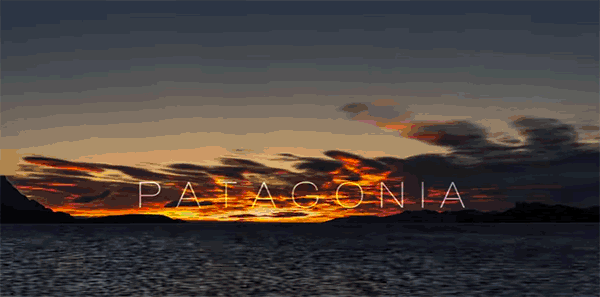Patagonia Time lapse

Patagonia Time lapse
Patagonia

Patagonia is a geographical region located in the southernmost part of America, comprising areas of southern Argentina and Chile. Politically, the region is divided into two: the Argentina Patagonia, east, and Chilean Patagonia, west. Patagonia covers an area of 1,060,631 square kilometers. While there is no consensus on the exact limits or criteria to define them as the most recognized boundaries, the 75.50% of the territory belongs to Argentina and Chile remaining 24.50%. Patagonia’s population is 2,410,804 inhabitants.
Currently, the northern edge of Patagonia Argentina is generally considered in the line of Colorado and Barrancas rivers, from the Argentine Sea from the Atlantic Ocean to the border with Chile.1
Meanwhile, the northern boundary of the Chilean Patagonia is usually located within Reloncaví, following the line the estuary of Reloncaví, the Petrohué River, Lake of All Saints and the Peulla River to the Tronador on the edge with Argentina.2 there are also those who indicate their location and extend north to 39 degrees south latitude, at the height of Villarrica, 3 however presently preferred differentiate the northernmost territory, calling Norpatagonia from within Reloncaví up the northern boundary of the region of Los Lagos.4 to the south, the boundary of the Chilean Patagonia used to be fixed in the Strait of Magellan, but today is usually spread to Cape Hornos.5 6
The binational Tierra del Fuego are often included as part of Patagonia
The Argentina Patagonia currently ranges from the Andes to the Argentine Sea from the Atlantic Ocean, and from the rivers Barrancas and Colorado to the north, south,
to the waters located south of Cape Horn in the Drake Passage, the boundary between the Atlantic and Pacific oceans. Delimited in this way, the land spaces of Patagonia Argentina totaling 800,891 square kilometers,
and include the Buenos Aires district of Patagones, the provinces of Neuquen, Rio Black, Chubut, Santa Cruz, and the South American sector of the Province of Tierra del Fuego, Antarctica and South Atlantic Islands.
On the other hand, if the Malargüe Mendoza adds, and pampeanos Curacó departments, Chical Co., Utracán, Hucal, Caleu Caleu, Puelén, Limay Mahuida,
Lihuel Calel and Chalileo, ie the western territories and south of La Pampa, which maintain some aspects of the Patagonian character and sometimes tend to be included in that region,
besides their own people so recognized, about 100 000 km² be added to the total area of Patagonia Argentina. Finally, all or only
southern sectors of the Buenos Aires Tornquist parties, Villarino and Puan, and even Bahia Blanca, being bordering the Colorado River, or their geographical and historical characteristics,
They could also be included therein. All these territories in the most accepted definition of Patagonia are not included.
The Argentine Patagonia northern boundary is marked by the abrupt change in the landscape generated by the decrease in rainfall, causing the ecosystem of the district troque
caldén spinal (naturally arboreal, very populated, and suitable for cultivation without artificial irrigation) to the geographical province of Mount plain, dominated by jarillas ç
(Naturally shrub-steppe, sparsely populated, and unsuitable for crops without artificial irrigation) where the typical Patagonian landscape, which will remain, with some variables in the rest of the Patagonia steppe begins abruptly.
The territory of the Patagonia Region consists of the provinces of La Pampa, Neuquen, Rio Black, Chubut, Santa Cruz and Tierra del Fuego, Antarctica and South Atlantic Islands, covering the ground, the Argentine Sea adjacent and airspace corresponding.